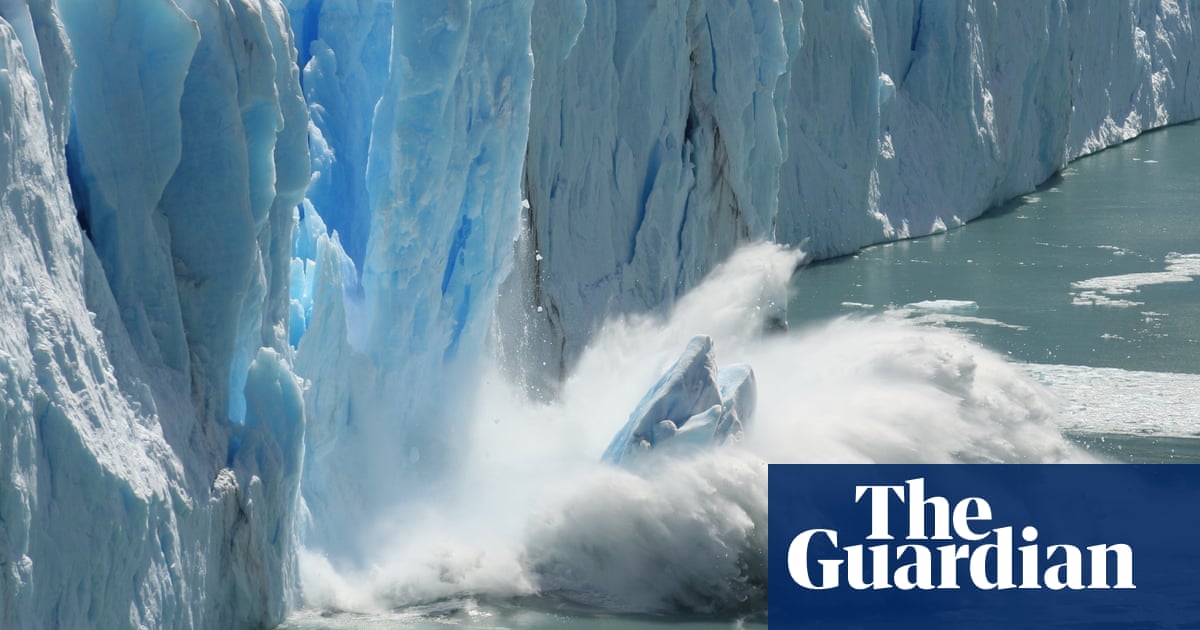Sea level rise will become unmanageable at just 1.5C of global heating and lead to “catastrophic inland migration”, the scientists behind a new study have warned. This scenario may unfold even if the average level of heating over the last decade of 1.2C continues into the future.
The loss of ice from the giant Greenland and Antarctic ice sheets has quadrupled since the 1990s due to the climate crisis and is now the principal driver of sea level rise.
The international target to keep global temperature risebelow 1.5C is already almost out of reach. But the new analysis found that even if fossil fuel emissions were rapidly slashed to meet it, sea levels would be rising by 1cm a year by the end of the century, faster than the speed at which nations could build coastal defences.
The world ison track for 2.5C-2.9Cof global heating, which would almost certainly be beyond tipping points for the collapse of the Greenland and west Antarctic ice sheets. The melting of those ice sheets would lead to a “really dire” 12 metres of sea level rise.
Today, about 230 million people live 1 metre above current sea level, and 1 billion live 10 metres above sea level. Even just 20cm of sea level rise by 2050 would lead to global flood damages of at least $1tn a year for the world’s 136 largest coastal cities and huge impacts on people’s lives and livelihoods.
However, the scientists emphasised that every fraction of a degree of global heating avoided by climate action still matters, because it slows sea level rise and gives more time to prepare, reducing human suffering.
Sea level rise is the biggest long-term impact of the climate crisis, and research in recent years has shown it is occurring far faster than previously estimated. The 1.5C limit was seen as way to avoid the worst consequences of global heating, but the new research shows this is not the case for sea level rise.
The researchers said the “safe limit” temperature for ice sheets was hard to estimate but was likely to be 1C or lower. Sea level rise of at least 1-2 metres was now inevitable, the scientists said. In the UK, just 1 metre of sea level rise would see large parts of the Fens and Humberside below sea level.
“What we mean by safe limit is one which allows some level of adaptation, rather than catastrophic inland migration and forced migration, and the safe limit is roughly 1cm a year of sea level rise,” said Prof Jonathan Bamber of the University of Bristol in the UK. “If you get to that, then it becomes extremely challenging for any kind of adaptation, and you’re going to see massive land migration on scales that we’ve never witnessed in modern civilisation.” Developing countries such as Bangladesh would fare far worse than rich ones with experience of holding back the waves, such as the Netherlands, he said.
Durham University’s Prof Chris Stokes, lead author of the study, said: “We’re starting to see some of the worst-case scenarios play out almost in front of us. At current warming of 1.2C, sea level rise is accelerating at rates that, if they continue, would become almost unmanageable before the end of this century, [which is] within the lifetime of our young people.”
The average global temperaturehit 1.5C for the first time in 2024. But the international target is measured as the average over 20 years, so is not considered to have been broken yet.
Sign up toDown to Earth
The planet's most important stories. Get all the week's environment news - the good, the bad and the essential
after newsletter promotion
The new study,published in the journal Communications Earth and Environment, combined data from studies of warm periods up to 3m years ago; observations of ice melting and sea level rise in recent decades; and climate models. It concluded: “Continued mass loss from ice sheets poses an existential threat to the world’s coastal populations.”
Prof Andrea Dutton of the University of Wisconsin-Madison, who was part of the study team, said: “Evidence recovered from past warm periods suggests that several metres of sea level rise – or more – can be expected when global mean temperature reaches 1.5C or higher.”
At the end of the last ice age, about 15,000 years ago, sea level was rising at 10 times the rate today, driven by self-reinforcing feedbacks that may have been triggered by only a small increase in temperature. The last time CO2levels in the atmosphere were as high as today, about 3m years ago, sea level rise was 10-20 metres higher.
Even if humanity can bring the planet back to its preindustrial temperature by removing CO2from the atmosphere, it will still take hundreds to thousands of years for the ice sheets to recover, the researchers said. That means land lost to sea level rise will remain lost for a long time, perhaps until the Earth enters the next ice age.
Belize moved its capital inland in 1970 after a devastating hurricane, but its largest city is still on the coast and will be inundated with only 1 metre of sea level rise, Carlos Fuller, Belize’s longtime climate negotiator, said: “Findings such as these only sharpen the need to remain within the 1.5C Paris agreement limit, or as close as possible, so we can return to lower temperatures and protect our coastal cities.”
